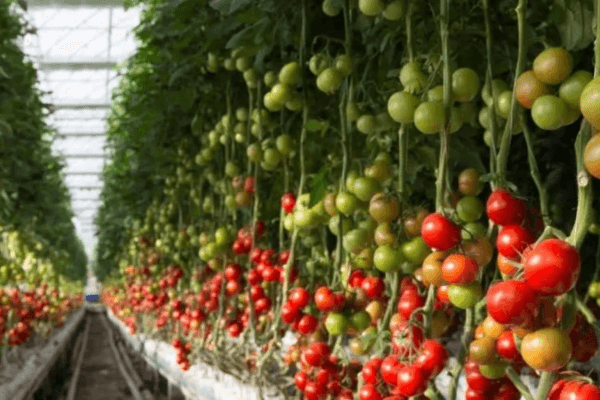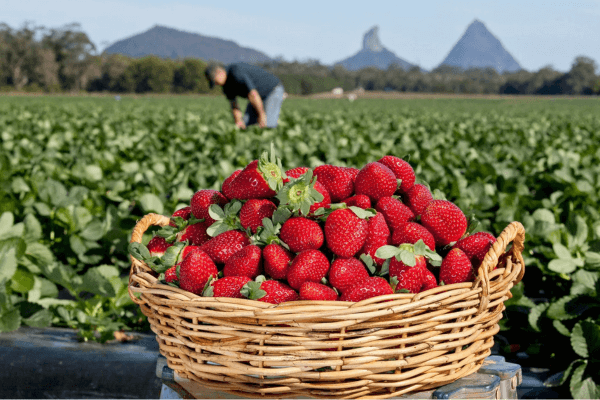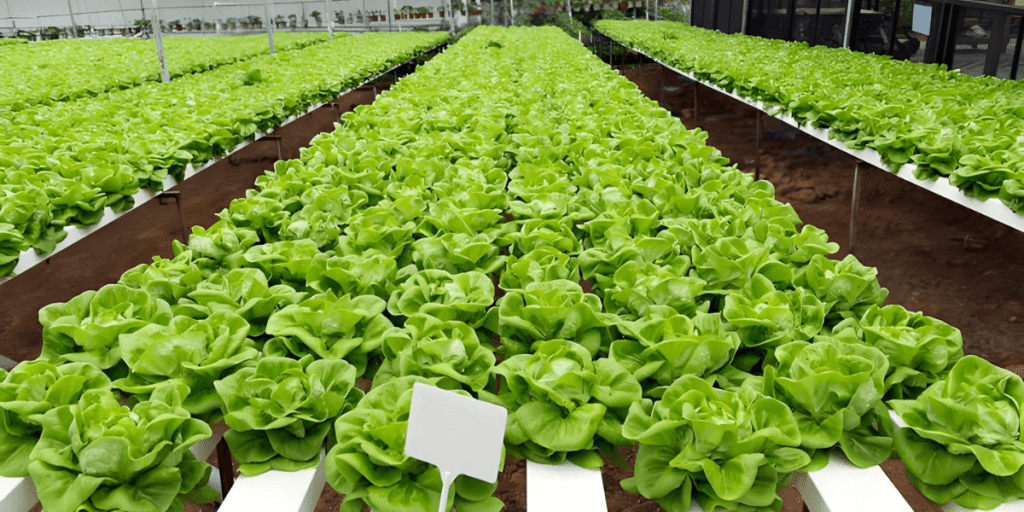The working principle of hydroponics is a game-changing approach to farming that eliminates the need for soil. Instead, plants thrive in nutrient-rich water that delivers all the essentials directly to their roots. Though it might sound like something from the future, this practice is actually an ancient technique, refined and perfected by modern science. It is now one of the most exciting and sustainable solutions for the future of agriculture.
For thousands of years, farming has been built around the simple elements of soil, sunlight, and water. But with the growing challenges of shrinking arable land, water scarcity, and unpredictable climate conditions, traditional methods just aren’t enough. Innovation in farming is no longer optional; it is essential. Hydroponics offers a powerful solution, allowing us to grow more with fewer resources, while also being more eco-friendly and productive.
In this blog, we will take you on a journey into the science behind hydroponics, show you how it works, explore its many benefits, and discuss the challenges it faces. Join us as we discover how this revolutionary method is changing the way we grow food and helping to feed a rapidly expanding world.
What is Hydroponics? The Core Principle of Hydroponic Systems
At its core, hydroponics is all about giving plants exactly what they need, right at their roots. Rather than relying on soil to supply nutrients, the plant roots are suspended in or regularly exposed to a nutrient-rich solution, carefully balanced and dissolved in water. This direct method ensures that the plants absorb the nutrients they need more efficiently, leading to healthier and faster growth.
The fundamental idea is straightforward: supply essential minerals, water, and oxygen directly to the plant’s roots in a controlled environment. This approach not only eliminates the risk of soil-borne diseases and pests but also conserves resources and enables year-round cultivation in various settings.
Unveiling the Science: How the Principle of Hydroponics Works
Understanding the science behind hydroponics is key to appreciating its efficiency. It’s more than just growing plants in water; it’s about creating an optimized environment for root development and nutrient absorption.
Plant Nutrition in a Liquid Medium: The Hydroponic Working Principle
Plants require 17 essential elements for growth. In traditional farming, these come from soil. In hydroponics, they are precisely measured and mixed into the water. These include:
- Macronutrients: Nitrogen (N), Phosphorus (P), Potassium (K) – vital for major growth functions.
- Secondary Nutrients: Calcium (Ca), Magnesium (Mg), Sulfur (S) – important for cell structure and photosynthesis.
- Micronutrients: Iron (Fe), Manganese (Mn), Zinc (Zn), Copper (Cu), Boron (B), Molybdenum (Mo), Chlorine (Cl), Nickel (Ni) -needed in smaller amounts but critical for various metabolic processes.
The nutrient solution is the lifeblood of a hydroponic system, meticulously balanced to meet the specific needs of different plant species and growth stages.

The Role of Water, Oxygen & pH in Hydroponics Systems
While “hydro” refers to water, oxygen is just as important. Plant roots, like all living tissues, need oxygen for respiration. Without it, they suffocate. Hydroponic systems make sure the roots receive plenty of oxygen through different methods, such as air stones, pumps, or by periodically draining the nutrient solution.
The pH level is another crucial factor. It measures the acidity or alkalinity of the solution, and each plant thrives within a specific pH range (usually between 5.5 and 6.5 for most hydroponic crops). Keeping the pH in the right range ensures nutrients stay soluble and are readily available for the roots to absorb. If the pH level is off, nutrients can become “locked out,” even if they’re present in the solution.
Beyond Sunlight: The Importance of Light in Hydroponic Principles
While some hydroponic systems use natural sunlight, such as those in greenhouses, many others depend on artificial grow lights, especially in indoor or vertical farms. Modern LED grow lights offer specific light spectrums, like blue light to promote vegetative growth and red light to encourage flowering. These lights help optimize photosynthesis and boost crop yields, regardless of the natural light cycle.
Diverse Hydroponic Systems: Tailoring Growth to Hydroponic Principles
Hydroponics isn’t a one-size-fits-all solution; various systems are designed to suit different scales, budgets, and crops. Each method efficiently delivers nutrients, water, and oxygen to the roots.
- Deep Water Culture (DWC): Plants are suspended above a reservoir, with roots submerged directly in the nutrient solution. Air pumps oxygenate the water. Simple and popular for leafy greens.
- Nutrient Film Technique (NFT): A thin film of nutrient solution flows continuously over the roots in a sloped channel. This provides both nutrients and oxygen without full submersion. Ideal for fast-growing, shallow-rooted plants.
- Drip Systems: Nutrient solution is delivered directly to the base of each plant through a small emitter. Excess solution can be collected and recirculated (recirculating) or allowed to drain (non-recirculating). Highly customizable and efficient.
- Wick Systems: A passive system where a wick draws nutrient solution from a reservoir up to the growing medium. Simple and low-maintenance, but less efficient for large plants.
- Ebb and Flow (Flood and Drain): The growing tray is periodically flooded with nutrient solution, then drained. This provides roots with nutrients and then allows them to air out, promoting oxygen uptake.
- Aeroponics: The most advanced system, where roots are suspended in air and misted with nutrient solution. This maximizes oxygen exposure and leads to rapid growth but requires precise control and can be complex.

Transforming Agriculture: The Hydroponic Working Principle in Practice
The shift to hydroponics isn’t just a technical change; it represents a paradigm shift in sustainable and efficient food production.
Radical Resource Conservation in Hydroponics: Understanding the Core Principle
- Massive Water Savings: Hydroponic systems recirculate water in a closed loop, drastically reducing evaporation and runoff. This can lead to an astounding 90-95% less water consumption compared to traditional field farming. For instance, growing a pound of tomatoes hydroponically can use 80% less water than in soil. This is a game-changer for water-stressed regions.
- Space Efficiency: Without soil, plants can be grown much closer together, and vertically stacked (in vertical farms). This means a single acre of hydroponic vertical farm can yield the equivalent of hundreds of acres of conventional farmland, preserving precious arable land.
Environmental & Crop Quality Benefits of Hydroponics Systems
- Reduced Chemical Use: The controlled indoor environment of many hydroponic setups drastically limits pests and diseases. This virtually eliminates the need for harmful chemical pesticides, herbicides, and fungicides, leading to cleaner, safer produce for consumers and minimizing agricultural runoff pollution.
- Lower Transportation Emissions: Hydroponic farms can be located in urban centers, drastically cutting down on “food miles” and the associated carbon emissions from transportation.
- Enhanced Yields & Consistency: Precise control over nutrients, water, and light leads to accelerated growth cycles and higher yields per square foot. Plants grow faster, often maturing in weeks instead of months, allowing for more frequent harvests. Studies have shown hydroponic lettuce can grow 30-50% faster than soil-grown.
- Superior Product Quality: Controlled conditions ensure uniform crop size, taste, and nutritional profiles. Growers can even fine-tune nutrient solutions to enhance specific flavors or nutrient content. Produce is also often cleaner, as it’s not exposed to soil.
Economic & Social Impacts: Hydroponics and Its Working Principle
- Year-Round Production & Food Security: Unaffected by external climate changes, hydroponic farms provide predictable, reliable yields 365 days a year. This significantly enhances food security and market stability, especially in regions with harsh climates.
- New Economic Opportunities: The burgeoning hydroponics sector creates new skilled jobs in plant science, engineering, automation, and urban planning. It drives innovation and fosters new business models.
- Addressing Food Deserts: By enabling food production directly within underserved urban areas, hydroponics offers a concrete solution to “food deserts,” improving local access to fresh, nutritious food.
Navigating the Hydroponic Landscape: Challenges in the Working Principle
While the advantages are clear, scaling hydroponics still comes with its own set of hurdles and exciting frontiers.
Current Hurdles to Adoption of Hydroponic Systems & Their Principles
- High Initial Capital Investment: Setting up advanced hydroponic systems, especially large-scale commercial operations, requires significant upfront investment in infrastructure, pumps, reservoirs, and grow lights.
- Energy Consumption: While efficient, pumps, lighting, and climate control systems in large-scale operations do consume electricity. This necessitates a focus on renewable energy integration for true sustainability.
- Technical Expertise & Monitoring: Hydroponic systems require constant monitoring of pH levels, nutrient concentrations, and environmental factors. This demands specialized knowledge and attention to detail, making it less forgiving than traditional farming if not managed properly.
- Disease Risk (Rapid Spread): If a waterborne pathogen enters the system, it can spread rapidly to all plants, potentially leading to quick crop loss.
- Limited Crop Range (Economically Viable): Currently, hydroponics is most economically viable for high-value, fast-growing crops like leafy greens, herbs, and some fruits (strawberries, tomatoes). Growing staple grains remains cost-prohibitive at scale.

Future Innovations in Hydroponics: Advancing the Core Principles
The future of hydroponics is dynamic and promising, driven by relentless technological advancement:
- AI-Driven Precision Farming: Artificial intelligence and machine learning will analyze real-time sensor data (nutrient levels, pH, temperature, light) to dynamically adjust environmental parameters. AI can predict plant needs, optimize nutrient delivery, and even detect early signs of stress or disease, maximizing efficiency and minimizing waste.
- Advanced Automation & Robotics: Robots are increasingly being deployed for tasks like seeding, transplanting, harvesting, and packaging in large hydroponic farms, significantly reducing labor costs and increasing precision.
- Renewable Energy Integration: The industry is heavily focused on powering hydroponic farms with dedicated renewable energy sources (solar, wind) to achieve net-zero carbon operations, addressing the energy consumption challenge head-on.
- Expanding Crop Portfolio: Ongoing R&D is focused on optimizing conditions for a wider variety of crops, aiming to make indoor hydroponic cultivation of staple foods economically viable in the long term, thereby addressing global food security more comprehensively.
- Vertical Integration & Circular Economy: Hydroponic farms are increasingly integrating with local food systems, processing plant waste into compost or bioenergy, and recycling water and nutrients to create truly circular agricultural models.
Global Impact: Hydroponics in Action and Its Core Principle
Hydroponics isn’t just an idea; it’s a rapidly expanding global movement. Across the world, from huge urban farms in New York like AeroFarms and Bowery Farming to innovative setups in arid regions like the Middle East and even climate-controlled environments in Japan, hydroponic systems are tackling real-world food challenges. These systems are able to produce fresh, high-quality crops consistently, even in the most difficult climates, helping strengthen local economies and improve food security.
One of the major benefits of hydroponics is its farm-to-table advantage. By growing food close to where it’s consumed, the time from harvest to plate is dramatically reduced. This means fresher produce with more nutrients and much less food waste throughout the entire supply chain. In fact, nearly a third of the world’s food is lost or wasted, most often during transportation. Hydroponics offers a practical solution to this problem, cutting down on waste while providing a more sustainable, local alternative.
Common Questions About Hydroponic Systems and Their Fundamentals
Q1: Do I need to check the water every day?
A: Not really. For small home systems, checking the water level and pH every 2–3 days is usually enough. Just make sure the roots are submerged and there’s no sign of algae or root rot.
Q2: What if I forget to turn off the grow light?
A: Plants need rest too! Leaving the light on 24/7 can stress them. It’s best to use a timer to give your plants a regular day-night cycle typically 16 hours on, 8 hours off.
Q3: Why does my water smell bad?
A: A bad odor often means algae or bacteria are growing in the system. Clean the reservoir, change the water, and block any light from reaching the water to prevent algae growth.
Q4: Can I use tap water in my hydroponic system?
A: Yes, but it’s recommended to let it sit for 24 hours so chlorine can evaporate. If your tap water is hard or high in minerals, use filtered or distilled water to avoid nutrient imbalances.
Q5: How soon will I see growth?
A: Very quickly! Most leafy greens sprout within 3–5 days and are ready to harvest in 3–4 weeks. You’ll notice visible growth almost daily once seedlings are established.
Q6: What’s the easiest plant to grow for beginners?
A: Lettuce, basil, and mint are great starter plants. They grow fast, don’t need complicated support, and can tolerate minor mistakes as you learn.
Q7: What if I go on vacation will my plants die?
A: Not necessarily. If your system has a large enough water reservoir and is set up with timers for lights and pumps, your plants can thrive for a week or more unattended. Just top up nutrients and water before you leave.
Q8: Do I need special seeds for hydroponics?
A: No, regular seeds work fine. However, seeds labeled “for hydroponics” may germinate faster or more uniformly, which can be helpful, especially for beginners.
Conclusion: Guiding the Future with Hydroponic System Principles
Hydroponics is more than just a farming technique; it’s a cornerstone of modern agriculture’s evolution. By enabling us to cultivate food with unprecedented precision, efficiency, and sustainability, it empowers us to break free from the constraints of traditional farming. From ensuring food security in dense urban environments to accelerating scientific breakthroughs and even preparing for future space exploration, the transformative role of hydroponics in shaping our agricultural future is undeniable and incredibly promising.
The meticulous science behind hydroponics isn’t just about optimizing plant growth; it’s about optimizing our relationship with food production for a greener, fresher, and more resilient global food supply.To truly grasp how hydroponics is shaping the future of food production, explore our dedicated analysis.
Ready to Explore the Future of Growing with Hydroponic Principles?
Whether you’re a curious hobbyist, an aspiring urban farmer, or a commercial grower seeking efficiency, understanding and adopting hydroponics is a powerful step forward.
Discover the fascinating science behind hydroponics and how it delivers nutrients, water, and oxygen directly to your plants’ roots for faster, cleaner, and more efficient growth! Whether you’re just starting out or want to level up your system, understanding how it works is the first step to growing smarter.
Visit www.greenfuturelight.com to discover innovative hydroponic solutions and high-performance grow lights designed for your success.
Connect with our experts for personalized advice on how to build a smarter, greener farm. Already experimenting with hydroponics? We’d love to see your setup! Tag us @Greenfuturehydro on Instagram or drop your progress in the comments below.
Need help choosing a system, balancing nutrients, or increasing yield? Send us a DM we’re here to help you grow with confidence.
And don’t forget to visit our Products page for everything you need to build your own thriving indoor garden!


